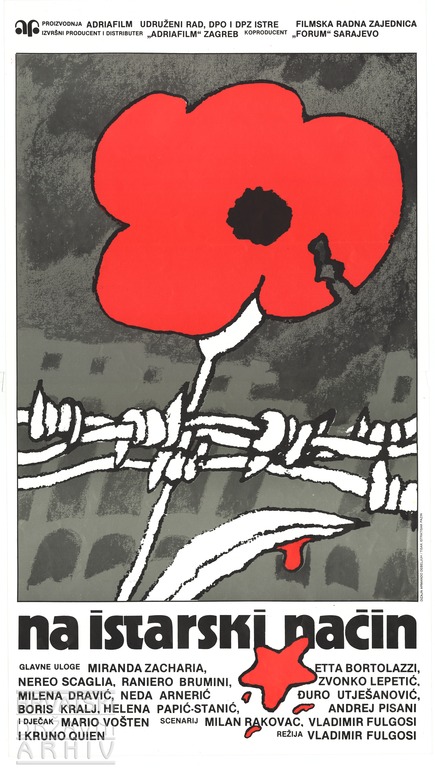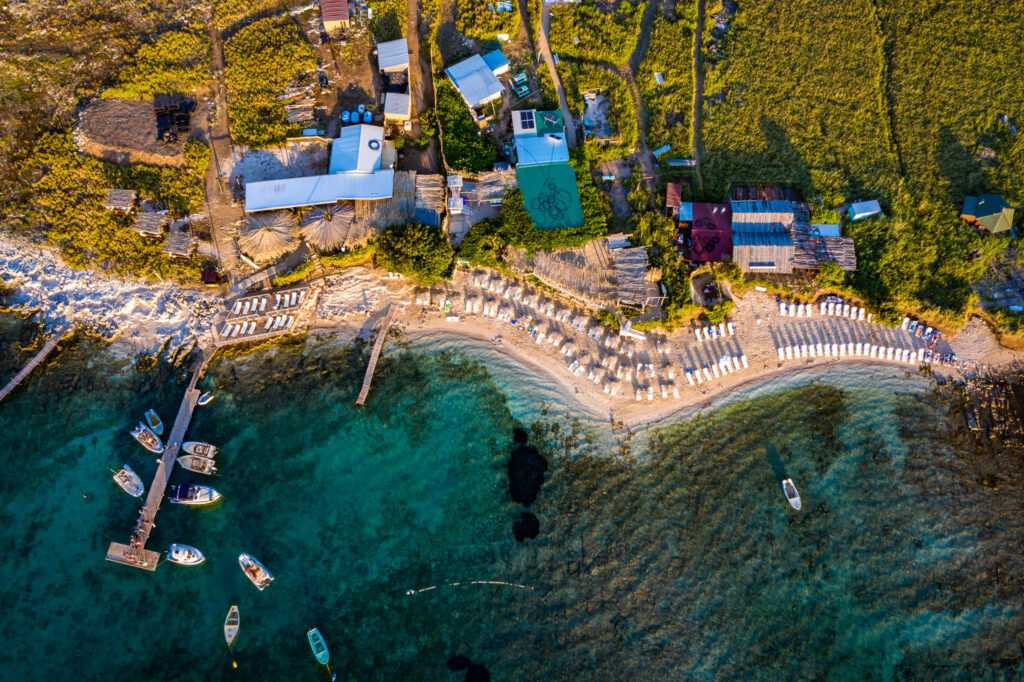
Synopsis
“Na istarski način”, a feature film directed by Vladimir Fulgosi, depicts a complex relationship between newcomers and local people in Istria after World War II. Through the story of conflicts, misunderstandings and adjustments, it depicts the tensions which were the result of demographic and social structure changes. At the same time, the film presents the attempts of cohabitation, understanding and life together within the new historical context. The film was made based on the novel on numerous Istrian locations, mainly around Pula Arena.
details
Original title: Na istarski način
Year: 1985
Country of production: Yugoslavia
Production: Adria Film
Genre: drama
Directed by: Vladimir Fulgosi
Starring: Neda Arnerić, Etta Bortolazzi, Miranda Caharija, Milena Dravić, Zvonko Lepetić, Đuro Utješanović, Boris Kralj, Predrag Milinković
Filming locations in Istria: Pula
REVIEW
NA ISTARSKI NAČIN, directed by Vladimir Fulgosi, 1985
ONE SQUARE, MULTIPLE DESTINIES: HOW THE COEXISTENCE WAS BUILT
Vladimir Fulgosi, known for his documentary and television works, is realizing his only feature film project with the film “Na istarski način“. With it, he brings an authentic portrayal of everyday life in post-war Pula in 1947, with an emphasis on interpersonal relationships and social dynamics. The film is based on the novel “Riva i druži” by Milan Rakovac, while the screenplay was written by Rakovac, Fulgosi himself and Kruno Quien.
“Well, well, everything is well quel’ che finissi well. No, no, don’t be afraid, he’ lost his mind in the camp. Cheers! Here’s to the new business victories!”
We see the situations in the film through the eyes of an elementary school student, a pioneer Grga, the son of a killed partisan, after World War II, after the departure of the Anglo-Americans. The story begins when he and his mother, comrade Luce, from an Istrian village, move to Pula by bus, with their neighbours giving farewell. As the widow of a fallen soldier, she has been given an apartment in Pula, and will soon start working in a small neighborhood store. In the city under the new people’s government, Grga meets a variety of characters: natives, representatives of the past, and immigrants like himself, each with their own beliefs and aspirations. He also finds a friend similar to his age, with whom he explores the world through boyish adventures and often spies on adults, regularly playing pranks.
“Die einen kommen, die anderen gehen…”
The exceptionally vivid and highly detailed plot actually consists of everyday life in those times, such as events in the neighbourhood, a visit to the grocery store, walking the dog, a mother invited to consult about her son at school, preparing a meal or going to a dance on the summer terrace, but always with messages about coexistence in the then multiculturalism and the obstacles and also the advantages that this exceptionally culturally rich environment offers its residents. A new school opens, numerous multilingual neighbors celebrate Easter together, and a tribute is paid to the fallen soldier, Luca's husband and Grga's father, by building a monument, which will be officially opened on 1 May.
“Many roads lead in all directions, but only one is right, Oy!”
Despite their differences, the square around which they are all located, in a part of the city called Blok sloboda (Freedom block), reveals their close and subtly placed relationships and the tangle of their characters that are conditioned by the language and dialects they speak. The film gives a plastic, vivid picture of the creation of a new society whose old and new members are now seeking their place among each other. No matter how different they all are, the square that is the center of the action, which is today's Scalierova Street – mainly between Varaždinska and Ozad Arena Streets, reveals their intimate and multi-layered coexistence in which they balance between religious customs and celebrations, celebrating national liberation symbols such as dancing the partisan (Kozara) “kolo” dance or joint working and entertainment actions.
“No me son fato fregar né dai Austriaci, né dai fascisti, e non me farò fregar gnanche da i drusi (comrades).”
From time to time, a public radio broadcast is turned on through a megaphone placed on the edge of the Arena walls. From it, ideological messages of the new government and the implementation of the Communist Party can be heard, with encouragement to work together and contribute to social renewal, strengthening the socialist spirit in the fight against fascism, enemies and occupiers. An excellent contribution to the vivid dramatic turns and an excellent scenographic element are the slogans written in red on the walls of the surrounding buildings, such as “Uniti per la pace” or “Vogliamo la Jugoslavia”. In addition to the inscriptions, we hear the shouts in different languages and dialects, in a variety of contexts, as proverbs, parts of many songs or ceremonial opening speeches. These lines from the film, stated as much as possible in the original language in which the characters pronounce them, are places between the paragraphs of this text.
“Religion is the opium of the people!”
The acting ensemble is also very rich and high-quality, with many renowned actors of the then Yugoslavia such as Neda Arnerić, Milena Dravić, Zvonimir Lepetić and Đuro Utješanović, with excellent acting performances by all of them, especially the boy Mario Vošten, in the role of Grga. The rhythm of the film is excellent and the flow from one scene to the next, which depicts the everyday life of the creation of the SFRY on the territory of Pula, has an excellent balance of duration, with well-placed comedy and caricature of real characters and a solid dramatic charge.
“Eco coss' che ne ga portà la vostra borba: un caval, un italian vendudo, un prigioner tedesco, un matto… e tutti quanti in fila indiana.”
In fact, the ensemble of all the characters as well as the complex of actions they carry out, and therefore this work, is something that makes the film “Na istarski način” a significant contribution to Croatian cinema, depicting a broader picture of social changes in post-war Istria, through the personal, lively relationships of the characters. Anyone interested in historical turmoil, social relations and the layered cultural heritage of the region will find here many interesting details, symbols, music and depictions of situations, with a very well-placed intertextual note, in addition to an excellent idea and realization of the narrative in the film.






